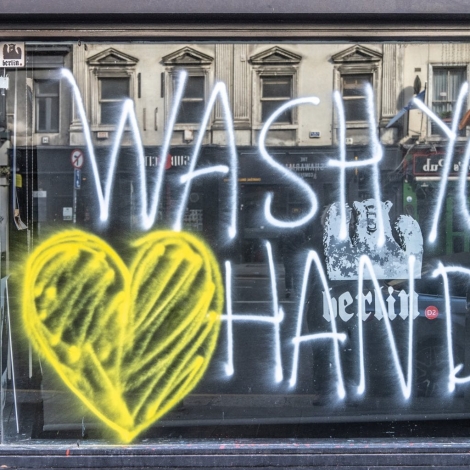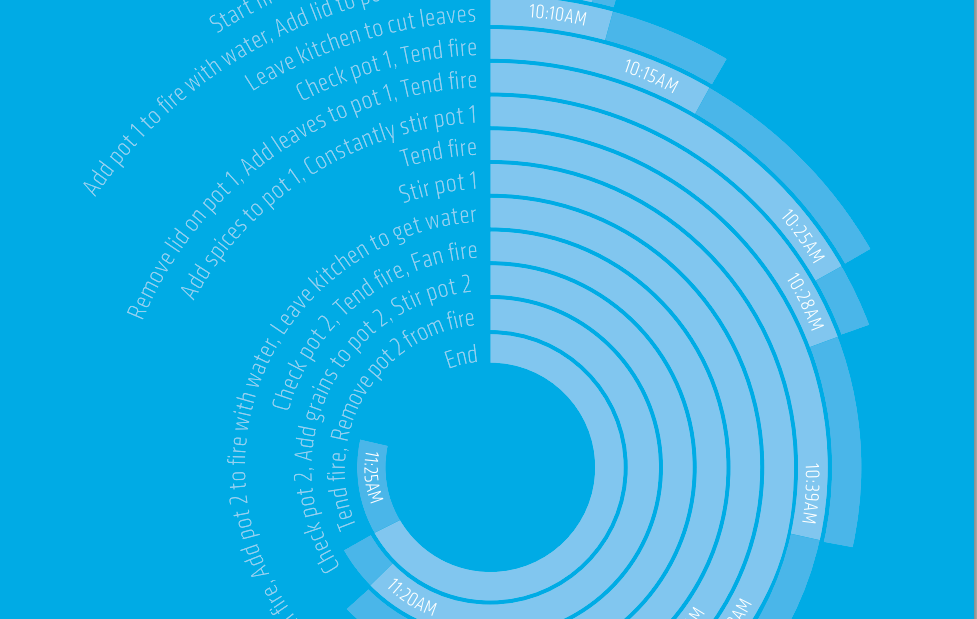The world is finding new and inventive ways to employ technology to solve the problems of a pandemic.
Around us, the world is settling into a new and less comfortable normal in the midst of the coronavirus pandemic. Our small team at Engineering for Change is doubling down instead. We founded this organization on an abiding optimism in technology, and the potential to use it well. At some level, all of us here are hopeful that technology will improve lives on large scales, so long as it is crafted and deployed wisely.
Optimism can seem naïve at this moment of self-isolation, and it may have appeared so even before the pandemic. It can be hard to justify a cheery outlook in the face of persistent global poverty and accelerating climate change. But we choose where to focus our attention, and since the beginning we have focused on what’s good and what’s possible. So, we’re doubling down on our techno-hopefulness and this is why. The world is responding to this crisis with inventive tools and creative applications of technical skill. These are a few examples that we’d like to highlight. Please share your experience with these and other technologies that are helping, or that have potential.
“We can all drop our job descriptions to solve this problem”
Dr. Daniel Horn, a physician at Massachusetts General Hospital in Boston (USA), writes in the New York Times about ways that America can ease the pain of its looming ventilator shortage.
“Big tech needs to rapidly build and scale a cloud-based national ventilator surveillance platform which will track individual hospital I.C.U. capacity and ventilator supply across the nation in real-time.
Such a platform — which Silicon Valley could build and FEMA could utilize — would allow hospitals nationwide to report their I.C.U. bed status and their ventilator supply daily, in an unprecedented data-sharing initiative. I have no doubt that the tech brain trust now sitting at home on Zoom can mobilize to get this done.”
“We’re in this together”
Inboxes are flooded with messages from presidents, directors and CEOs that declare action plans in tones along a spectrum from inspiration to regret. Engineering for Change added to the digital deluge and sent a note about our hopefulness in humanity’s power to endure.
“We’re in this together,” E4C’s President Iana Aranda writes. “Like many of you, we are watching with great concern as the communities where we live and work are being impacted by this global shock. At the same time, we are deeply inspired by the novel ideas from the technical community around the globe.”
This face mask could kill pathogens
Hyo-Jick Choi, a biomedical engineer at the University of Alberta in Canada is developing a medical face mask that may be able to kill pathogens, John Falcioni writes at the Bioengineering Blog on the website of the American Society of Mechanical Engineers.
“The secret ingredient is table salt. Because the molecular structure of salt is crystalline, its hard and sharp corners can pierce viruses rendering them unviable. Choi’s team has been testing salt-coated masks in the lab for several years and found that they can inactivate three strains of the influenza virus. The pathogen-neutralizing technology could significantly improve infectious-disease prevention efforts. He hopes to bring the masks to market within the next 18 months.”
3D-printed medical equipment replacement parts
Italian FabLabs in Milan and Brescia collaborated with the 3D printing company Ininnova to supply a printer and print replacement parts for intensive care medical devices. At the last update by 3D Printing Media Network, at least 10 patients were breathing with help from ventillators using printed valves. The online community responded with offers to donate time, know-how and resources to 3D print parts for medical devices around the world.
The help could come with a cost if the donated parts do not comply with safety and performance standards. In an emergency, however, they may help.
Startups develop affordable ventilators for use in underserved communities
A shortage of ventilators threatens to increase the mortality rate of the COVID-19 outbreak circling the globe. E4C’s Solutions Library may be of help. The database lists technologies that are appropriate and accessible for those living in poverty.
Medical devices are not the only class of technology listed. Search or peruse the database for inspiration from hundreds of technologies in eight categories.
See E4C’s Solutions Library
The Open Source Ventilator turns saving lives into a group project
This effort to head off the ventilator shortage is based at the Center for Safety, Simulation and Advanced Learning Technologies at the University of Florida Health in Gainesville (USA). The online collaboration is developing open-source engineering design specifications for a ventilator that could be built anywhere in the world with the means. One of the assumptions the project makes is that regulatory bodies will waive requirements in the event of an emergency.
Similarly, Open Source Ventilator Ireland has begun development of a Field Emergency Ventilator in partnership with the Irish Health Service. To date, the project has convened an online team of engineers and medical practitioners to develop new, low-resource interventions. The group is considering Bag Valve Masks, 3D-printed and traditionally manufactured components. The teams may also address other medical challenges as they arise from frontline healthcare workers, according to the project’s site.
The private sector mobilizes 3D printers
The information technology giant HP Inc. is mobilizing global teams of 3D printers to manufacture and deliver medical equipment parts in response to the pandemic.
According to HP:
“More than 1000 3D printed parts have already been delivered to local hospitals. HP’s 3D R&D centers in Barcelona, Spain; Corvallis, Oregon; San Diego, California; and Vancouver, Washington are collaborating with partners around the world in a coordinated effort to increase production to meet the most urgent needs. Initial applications being validated and finalized for industrial production include face masks, face shields, mask adjusters, nasal swabs, hands-free door openers, and respirator parts. HP is also coordinating with government, health, and industry agencies in numerous countries to ensure a synchronized and effective approach.”
Project N95: a pop-up clearinghouse of masks and other medical equipment
Project N95 matches suppliers of N95 masks and other medical equipment with hospitals that need them. To date, the site has received more than 2000 requests from institutions seeking more than 110 million personal protective equipment (PPE) devices.
“Rapid response teams have been coordinating with manufacturers globally with the capacity to produce. Within weeks, millions of units of personal protective equipment (PPE) should be available for distribution,” the site says.
Handwashing Stations Designed to Encourage Kids to Wash Their Hands
Handwashing has become a global obsession in the wake of the pandemic. As COVID-19 begins to penetrate underserved communities in India, African countries and elsewhere, creative handwashing solutions become increasingly important. Splash, a non-profit based in Seattle, Washington (USA) is testing ways that design encourages handwashing among children in emerging economies. Their tests with surveillance cameras and surveys have found that the shape and location of a handwashing station may affect how children wash their hands. Mirrors might matter. As may soap dishes. This article examines their handwashing station design based on evidence they procured.
Working remotely can work, if you’re smart about it
People who are used to meeting in offices and schools have begun working and attending classes from home. The experience is new to some, and it requires some know-how to succeed. Grace Burleson, an E4C Expert Research Fellow, shares tips she learned from managing online collaborations with fellows based around the world.
“To manage work across time zones, we have continued to improve our online meeting facilitation model. Here is what has worked well for us facilitating discussions with a team of fewer than 20 people,” Grace writes.
Make the most of shelter-in-place orders to learn and design
Take advantage of downtime to learn about a new topic or even start an online degree program. We’ve listed 10 sites for online education in the sciences, technology, engineering and math.
Ten Best Sites for a Free Online Education
E4C’s live monthly programs of seminars and webinars continue without interruption. Use them to gain insight into issues in for global development and to safely meet practitioners, students and professors around the world without risk of spreading disease.
Register (for free) for the next presentation. And browse an archive of recorded talks.
While staying home during this pandemic, you can contribute your talent to advancing the Sustainable Development Goals. We’re collaborating with the engineering firm Siemens USA to offer the Innovate for Impact: Siemens Design Challenge. Consider E4C as your digital homebase for the best chance of success in the contest.
nabu.org, a publishing network providing local language content for young readers to increase access to literacy, launched a campaign called #keepreading. The organization made its reading app free so children can keep reading from home while schools are shut down. Our partners at empowering people. Network, by the Siemens Foundation, awarded the startup and alerted us to the offer.
Stay healthy with digital tools
ICT Works has listed mobile and other digital tools to help track cases of COVID-19 and other ways to stay healthy amidst a pandemic.
In the comments below, please share your thoughts and articles you’ve seen on creative and helpful responses to this global emergency. Stay safe. And wash your hands!

